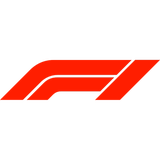





































































































































F1 close to finalizing new 2017 aero rules, says Symonds

Williams technical chief Pat Symonds says that the 2017 Formula One aerodynamics package has now been fully defined, and is confident that the World Motor Sport Council will formally approve it.
The teams have been working with the FIA to create a package that produces faster lap times. Symonds says a revised version of Article 3 of the FIA F1 Technical Regulations, which defines bodywork and dimensions, has been gaining approval. The bodywork changes will come in parallel with wider tires.
"There is a set of regulations, a draft of Article 3," said Symonds. "Largely the work of Williams putting the wording together, although the discussion has been very wide. That draft is going to the teams within the next week, but it's essentially everything that's been agreed, just put down into one document.
"It does fully define the aerodynamic regulations. In itself, it doesn't define the tire size, but we have agreed on the tire size, and the regulations are built around those tire sizes. Although Article 3 doesn't refer to tire sizes, obviously various widths of wings and bodywork are linked to that.
"I believe that we have now a fully defined set of rules that relate to all the bodywork. I believe we have agreement with Pirelli as to what the tire sizes will be. There are some differing opinions as to what the performance of the package will be, as in indeed there were in 2008.
"But, we're in a position to go ahead. The rules need to be ratified before March, and there's time for that. We're pretty well there â we've done what we were asked to do."
Symonds also explained how the new aero rules would alter the style of the car.
"The majority of the cues are taken from the Red Bull proposal," he added. "It's ended up with a bigger diffuser, a substantial front wing, and some I think quite attractive styling. It's a little bit retro, but the brief from the Strategy Group was to make the cars quicker and make the styling better. I think we've done those two. It's not for me to say whether we've done the right thing or not, but the TRM (Technical Regulation Meeting) members have done what was asked of them."
Symonds also says the package is flexible and can be adjusted if there's a desire to increase speeds.
"To be honest we've got quite a wide open aerodynamic platform, it won't take much to add performance to it," Symonds said. "In fact, I suspect that we're adding a bit more than required, but at the moment Pirelli's estimates of increased of tire grip are quite low, so we need to push the aero side of things."
Meanwhile, Symonds admitted the thorny question of following other cars - brought into focus once more by Lewis Hamilton in Brazil â has yet to be addressed.
"My belief is that the more downforce you have on a car, the harder it is to follow," he added. "And this car has more downforce. Therefore, irrespective of any niceties that the Overtaking Working Group may have come up with - irrespective of whether one believes them or not and as a member of that group, I know what short cuts we did against the true scientific process. The fact is if you've got more downforce, the harder it is to follow. I think that's simplistic, but nevertheless quite a true view."
